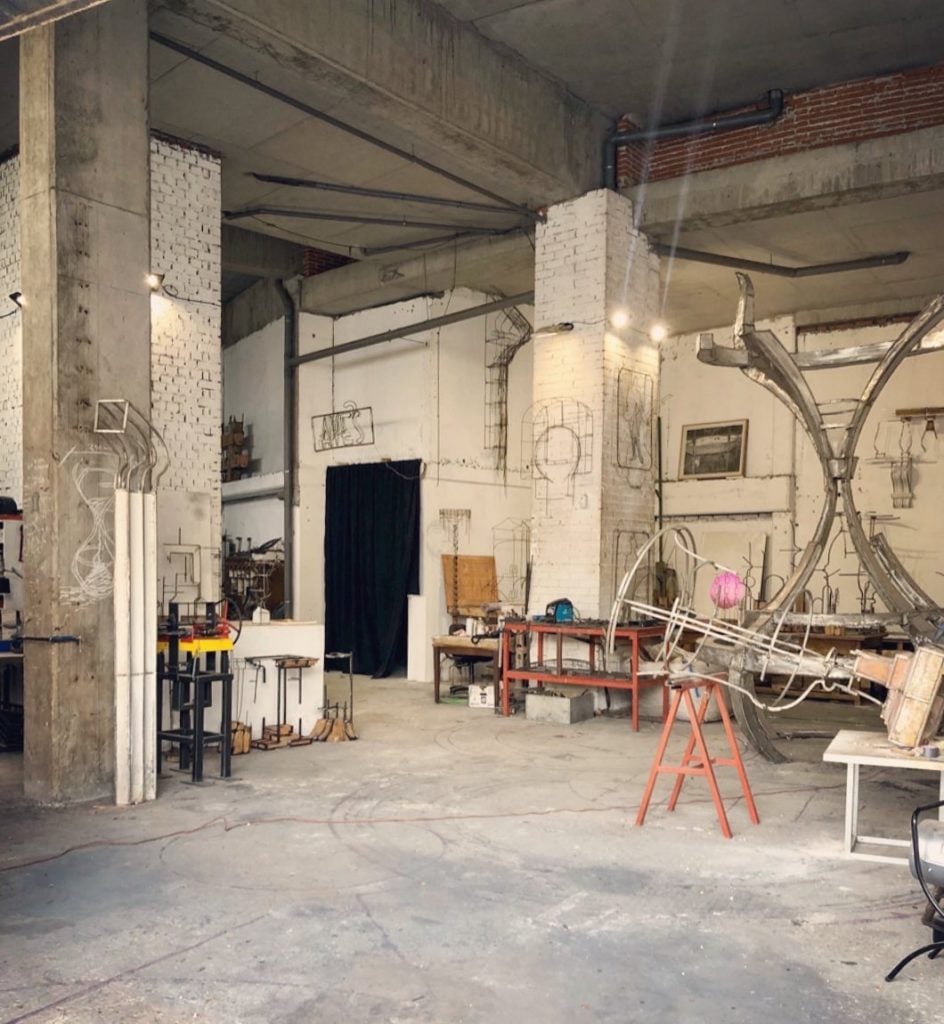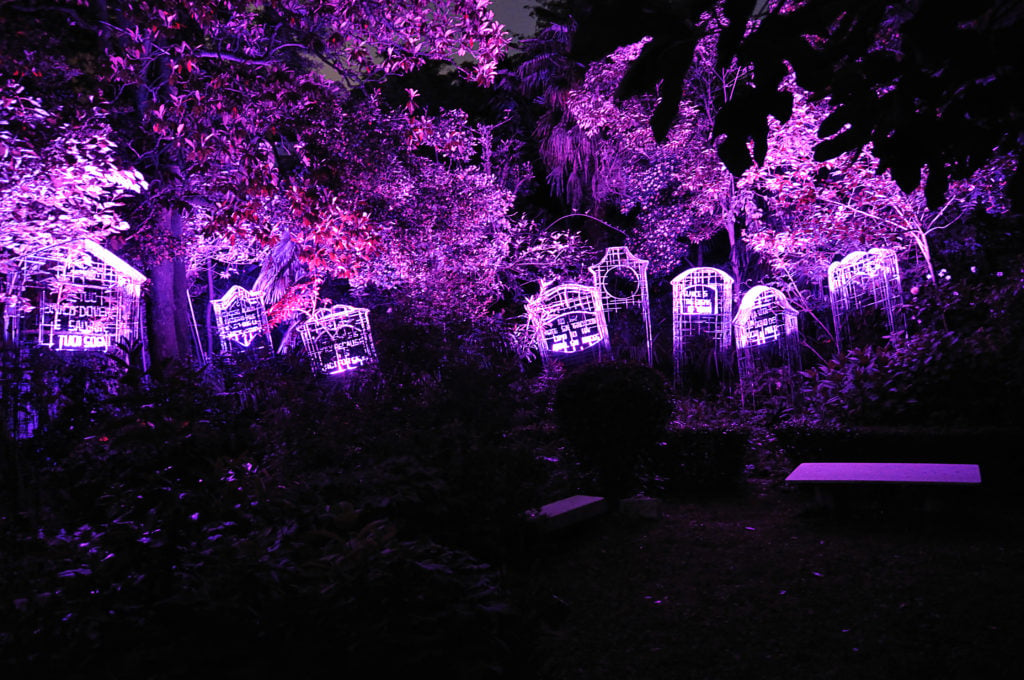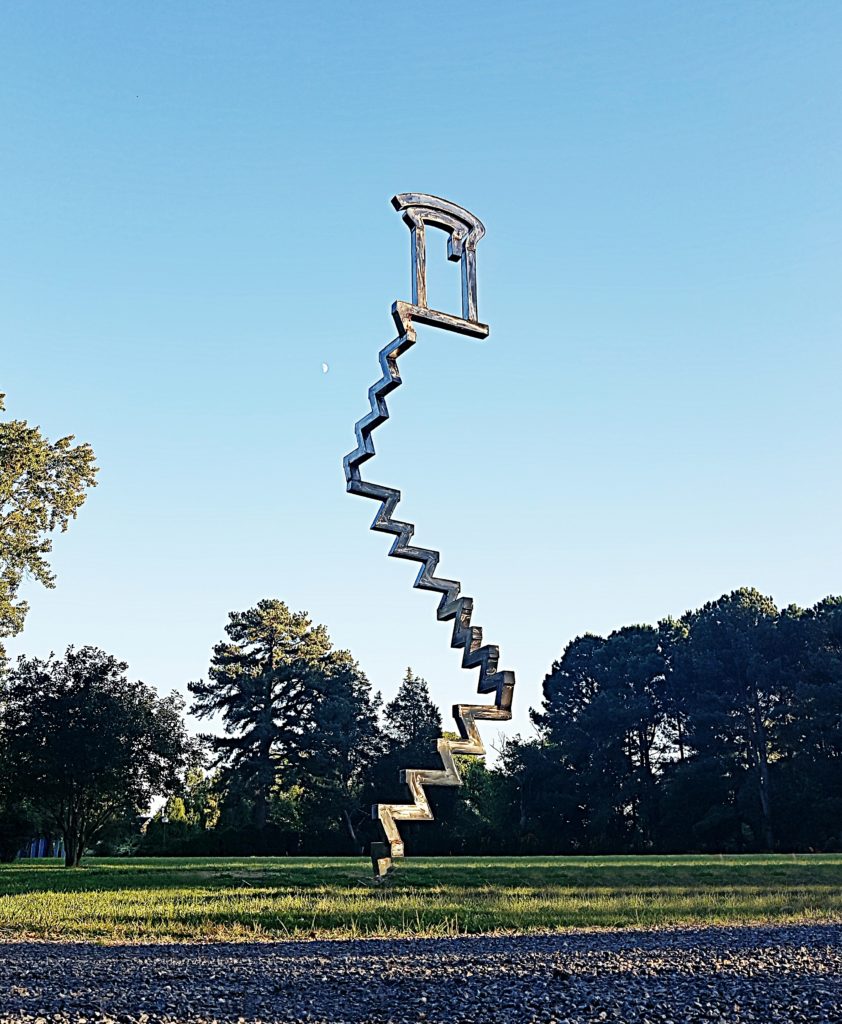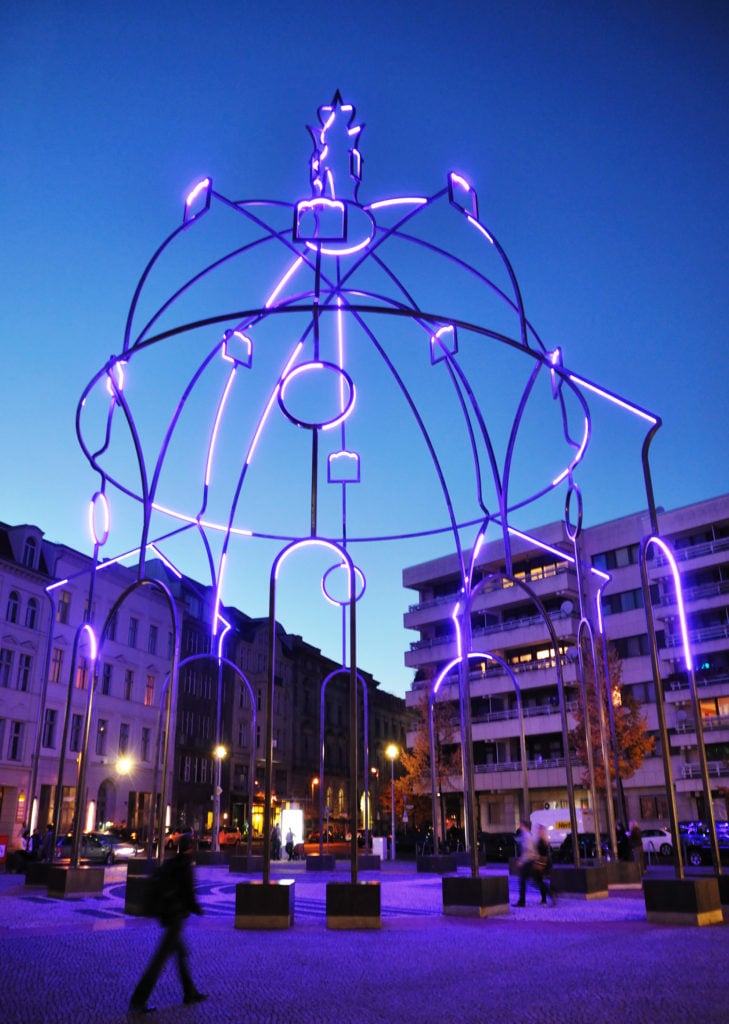Juan Garaizabal On How His Environmental Activism and Artistic Practice Fuel Each Other


Sophie Neuendorf

Spanish visual artist Juan Garaizabal has a diverse practice encompasses drawing, sculpture, video, light and acoustic installation, among other media. Recently Artnet’s Sophie Neuendorf visited his studio where they discussed his practice.
Juan Garaizabal is an artist on a mission. “I want citizens to commit to the conservation of the planet,” he explains, as we enter his Madrid studio. A sprawling space with concrete flooring and high ceilings, the studio is littered with conceptual sculptures and works-in-progress, drawings, and smaller pieces commissioned by private collectors. Sustainability is one of the driving forces behind Garaizabal’s oeuvre and reflects his interest in the cycles of of history and life; in his view, recycling is a retrieval of the past that looks toward the future.
Several years ago, the artist’s practice began to shift after he’d spent time “exploring old romantic stone masonries,” and he began to incorporate some of the stones he’d recovered into his sculptures, in turn saving these historic objects from permanent destruction.

In his sculptures Garaizabal often combines these historic materials with modern materials, particularly stainless steel. In totality, the works are a visual play between history and the present day showing how beautiful the tension between the past and present can be. In the process of making these configurations, the artist says his appreciation of the inherent properties of materials grew.
The Spanish artist was born in Madrid, but now lives and works in Berlin. One of his most important and recent projects is an ode to the city’s destroyed Bohemian church of Bethlehem, a symbol of friendship between Germans and Czechs, in the form of a monumental sculpture. This current project comes as part of his “Urban Memory” project, which attempts to symbolically recover spaces that have been forgotten to history.

Juan Garaizabal, La Memoria del Giardino (2013). Courtesy of the artist.
Originally planned as a temporary installation, the sculpture has recently been re-commissioned as a permanent memorial function, positioned at a mosaic that marks the exact place where the Bohemian Church of Bethlehem once stood, just a few meters away from the famed Checkpoint Charlie between East and West Berlin. The impressive sculpture is a memorial to emigration, tolerance, and freedom of thought.
“I am interested in bringing pieces of history into the present day, and especially showing how historical structures impacted the lives of the peoples living during that time,” Garaizabal tells me. Wandering his studio space is in a sense a testament to this desire, with scattered with references to historical structures, as Garaizabal recounts their personal and historical significances with obvious pleasure.

Juan Garaizabal, Lighthouse Stairway (2017).
His artistic interest in history is deeply tied to a desire to ensure an stewardship of the earth’s future. For the 2019 edition of ARCO Madrid fair, he created an installation encouraging visitors to actively participate in acts of preservation. The interactive work, titled #BecauseThereIsNoPlanetB was itself a call to action; the sculpture’s base was a depository for plastic bottles. “We have to react in the face of the dangerous way in which plastic is changing the planet, “ the artist emphasizes.

Juan Garaizabal, Memoria Urbana Berlin (2012). Courtesy of the artist.
Garaizabal’s most recent sculptures are largely made by hand, using techniques such as forging, carpentry, and masonry— skills acquired over time and through experimentation with new and recycled objects. What motivates him to continue experimenting? It is a desire “to connect people around the world, from all nationalities, beliefs, and backgrounds,” he explains, “in a joined memory of the time they lived in.”
See Garaizabal discuss his relationship to the city of Berlin below
[bc_video video_id=”6104923621001″ account_id=”4129125564001″ player_id=”default”]